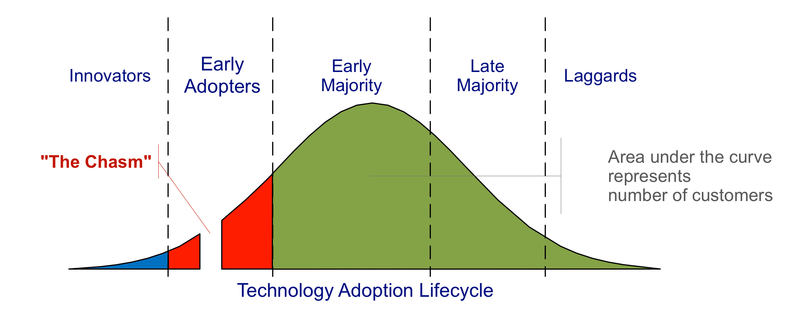If you had to, how would you put your company out of business?
For Sam Mallikarjunan, that isn’t a hypothetical question: it was his mandate as the Head of Growth at HubSpot Labs. In the role, he was responsible for discovering looming threats and turning them into growth opportunities.
The products that came out of HubSpot Labs are everywhere—notable ones include ThinkGrowth.org, Inbound.org, and HubSpot’s free sales email tracking tool.
Creating relevant products that the market didn’t know they needed required plenty of risks and a strong understanding of audience and goals. In an interview, Mallikarjunan explained how teams can run successful marketing experiments by getting clear goals from management, investing in audience research, failing fast, and keeping an eye on long-term threats.
1. Get clear goals from your managers.
Mallikarjunan has worn many hats within HubSpot, with stints on the consulting, experimental marketing, eCommerce, Labs, and strategic teams.
Whenever he moves to a new position within the organization, he always starts by asking for a clear vision of management’s expectations for the team and the role.
“My first step, and I’ve learned this the hard way, is to make sure it has clearly defined scope and goals,” he says. “Ambiguity creates inefficiency. If you don’t have the ability to focus, it’s unlikely that you’ll be very effective.”
At this point, he says it’s more important to know why management is asking you to fill the role and what they expect in terms of results, even if it’s not a perfect measurement. The how of the job can be figured out as you go.
“If you don’t know the why and the what, you’re setting yourself up for failure,” he says.
2. Don’t skimp on persona research.
Too often, marketers create personas based on assumptions or small amounts of research. But this approach ends up hurting them in the long run.
At HubSpot Labs, Mallikarjunan and his team set out to completely understand their customers and the wider market before jumping into launching products or tools.
“When Google invested in us, they really beat into us the importance of living your customer’s life and physically watching them as they go about their day to understand what the job is that they’ve actually solving for,” he says.
The Jobs to be Done framework is famous for revealing startling results on why people choose specific products. The classic example is McDonald’s discovering that their customers buy milkshakes to combat morning hunger instead of satisfying a sweet tooth.
At the time of their research, HubSpot was looking to reach marketing executives who would buy their inbound marketing software. Through interviews with this audience, his team uncovered an interesting opportunity.
“There’s always an inherent conflict between marketing and sales. And the marketing organization doesn’t like getting into conflict with sales generally,” Mallikarjunan recalls.
“When the VP of sales or the sales leaders say, ‘Listen, we’re already using this particular piece of software and we want you to use this marketing software because it integrates well with what we’re doing’, the marketing leader tends to be inclined to agree.”
His team used this research to their advantage in two ways. First, they knew that winning over the sales team would often lead to business from the marketing team. Second, they knew that traditional enterprise software was sold to sales executives, who then had an uphill battle convincing individual representatives to use the software.
HubSpot decided to shake things up by winning over individual sales reps, who would then put pressure on their leaders to buy software, who would then convince marketers to buy the software, too.
The result was HubSpot Signals, a free Google Chrome notification app that tells sales and service representatives when and how to engage leads and customers. Their audience research was critical to uncovering this hidden opportunity to reach sales leaders, and, by extension, marketing teams.
"How fast you can either prove or disprove your hypothesis is how fast you can run through cycles of learning."
3. Fail quickly and move on.
That said, not all marketing experiments end in victories.
“The number of failures both in experimental marketing as well as Labs by far outnumber the successes,” Mallikarjunan says. “We could go on and on about the number of failures.”
He recalls two failures in particular. The first came about when the team was trying to find new buyer segments. Despite wins with ecommerce companies and agencies, they found franchises would never be ideal HubSpot customers.
“If the home office buys a piece of software that none of the franchise use, they’ll cancel it. It’s just really hard to get those people on board if they didn’t make the decision themselves.”
Another idea they had to kill was adding a jobs board to Inbound.org, HubSpot’s online community for marketers. Mallikarjunan saw a huge opportunity to provide a jobs pipeline for companies looking for candidates with deep experience in inbound.
But they had to kill the idea. “We couldn’t make it work because we weren’t a jobs company and didn’t have that competence,” he says.
The obvious question is how you’ll know when to give up or try harder. Getting that answer depends on a bunch of factors, including your customer type.
“The key to that is to fail quickly. I know that’s kind of a cliche in the startup world. But how fast you can either prove or disprove your hypothesis is how fast you can run through cycles of learning,” says Mallikarjunan.
He points to enterprise companies as having longer learning cycles because of slower market feedback. So, B2B marketers naturally can’t move as fast as someone selling to consumers.
“The faster you have that feedback loop the better decisions you can make and the more quickly you can innovate and the more things you can try.”
4. Don’t forget to think long term.
As digital marketers, it’s tempting to get obsessed with numbers that reflect the quarter or the year’s results. But sometimes that thinking leads to short sightedness about market trends and upcoming threats.
Early on, HubSpot Labs identified a potential issue with business leaders not understanding the impact of the internet on marketing and sales operations.
“The biggest impediment to growth that we have is not someone selling a cheaper software or a software with more features,” he says. “The biggest impediment to growth is that the majority of companies are still pretty bad at sales and marketing.”
Mallikarjunan found that most companies still do marketing and sales the same way they did ten years ago, making a product like HubSpot’s incompatible with their business approach. That means HubSpot would soon hit a growth ceiling unless the market itself started growing.
This conundrum might sound familiar if you’ve read Crossing the Chasm, a book about the challenges of growing an innovative product from early market to mass adoption.
The technology adoption lifecycle mentioned in the book says that most industry-changing companies die in the chasm between innovators and early adopters. Essentially, your company will fail if the majority of people can’t be convinced that your new solution is worth buying.
“That big jump and chasm from your early adopters to the majority of market is really hard to overcome unless you do really significant market education,” he says. “The biggest issue is advancing the thinking in the market to be in line with what we think people should be doing.”
To overcome this challenge, HubSpot Labs launched ThinkGrowth.org, a Medium publication that shared business leadership and strategic marketing content aimed at the executive level.
“It wasn’t necessarily about driving more sales to HubSpot, but thinking further down that road as we move up that curve to getting the majority of companies in the world using software like this, even if it’s not ours,” he says.
Education is a solid investment if your product or service isn’t already a part of people’s workflows or lives. In the HelloSign Re:Growth episode, Jackie Davis described how she followed a similar path with the launch of Digital Strength. The course is designed to empower customers to create digital transformation at work, which naturally opens opportunities for HelloSign’s eSignature solution.
Get the details on all of this and a whole lot more…
Listen to our full podcast to hear Mallikarjunan discuss all of the above plus:
- Why people trust lobbyists more than marketers, and how we can change that
- How to move from a generalist to a specialist as a company grows
- Finding your next opportunity within or outside of your company
- His best advice for leveling up in a B2B marketing career

